OPAT treatment for non-cystic fibrosis bronchiectasis exacerbations

The recently published guidelines of the Spanish Society of Pulmonology and Thoracic Surgery encourage physicians to use outpatient antimicrobial therapy to treat exacerbations in patients with non-cystic fibrosis bronchiectasis (NCFB)” López-Cortés et al (2019). Abstract: BACKGROUND: The recently published guidelines of the Spanish Society of Pulmonology and Thoracic Surgery encourage physicians to use outpatient antimicrobial […]
Accuracy of syringe infusion pump devices depending on altitude

The aim of this study was to compare infusion flow rates delivered by low-weight versus standard SIP devices, in the prehospital emergency medicine setting, at different altitudes” Blancher et al (2019). Abstract: BACKGROUND: Intravenous drug infusions in critically ill patients require accurate syringe infusion pumps (SIPs). This is particularly important during transportation of critically ill […]
Vascular access animal models used in research

To provide a systematic literature review on effectiveness of arteriovenous fistula (AVF) and Shunt (AVS), research animal models” Kokozidou et al (2019). Abstract: PURPOSE: To provide a systematic literature review on effectiveness of arteriovenous fistula (AVF) and Shunt (AVS), research animal models. BACKGROUND: Due to advancing human population age, there is increased incidence of patients […]
Practices and perceptions regarding intravenous opioid infusion

More than half the nurses working in the inpatient setting reported administering iv opioids too fast. ICU nurses administered opioids the fastest” Arthur et al (2019). Abstract: BACKGROUND: In view of the recent opioid crisis, ways to promote safe and effective opioid-related practices are needed. Faster intravenous (iv) opioid infusion rates can result in increased […]
Anaphylaxis simulation for interprofessional healthcare education
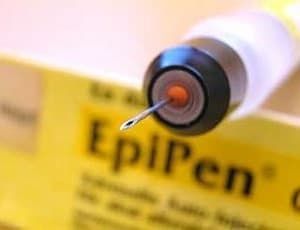
In the spring of 2015, stakeholders at the outpatient antibiotic therapy program (OPAT) at The Ottawa Hospital (TOH) approached the nurse educator team to develop an education session around anaphylaxis management” Dale-Tam and McBride (2019). Abstract: In-situ simulation occurs in the clinical environment. This allows healthcare providers greater access to the educational session while providing […]
Study on the infusion-site adverse events of epirubicin in chemotherapy

In breast cancer patients on a fluorouracil-epirubicin (EPI)-cyclophosphamide (FEC) regimen and intravenous fosaprepitant (FAP) during chemotherapy, infusion-site adverse events such as vascular pain and induration and/or phlebitis are observed” Yamasaki et al (2019). Abstract: In breast cancer patients on a fluorouracil-epirubicin (EPI)-cyclophosphamide (FEC) regimen and intravenous fosaprepitant (FAP) during chemotherapy, infusion-site adverse events such as […]
Risk of Emerade product failing to deliver a dose of adrenaline from the syringe

Pharmaswiss Česka republika s.r.o. (an affiliate of Bausch & Lomb UK Limited) has informed us of a risk of Emerade product failing to deliver a dose of adrenaline from the syringe due to blockage of the needle” MHRA (2019). MHRA report “Bausch & Lomb UK limited has informed us of a risk of Emerade product […]
Patient acceptability of three different central venous access devices

Patient experiences and preferences have not been systematically used to inform policy and practice regarding CVAD availability and selection” Ryan et al 92019). Abstract: OBJECTIVE: Three types of central venous access devices (CVADs) are routinely used in the delivery of intravenous systemic anticancer therapy (SACT): peripherally inserted central catheters (PICCs), subcutaneously tunnelled central catheters (Hickman-type […]
Multi-component lipid emulsion vs soy-based lipid emulsion for very low birth weight neonates

To examine the effectiveness of soybean oil-medium chain triglycerides-olive oil-fish oil lipid emulsion (SMOF-LE) on clinical outcomes of very-low-birth-weight neonates” Torgalkar et al (2019). Abstract: Objective: To examine the effectiveness of soybean oil-medium chain triglycerides-olive oil-fish oil lipid emulsion (SMOF-LE) on clinical outcomes of very-low-birth-weight neonates. Study design: We conducted a pre-post comparative study of […]
Analysis of needlestick injuries and depression among medical staff
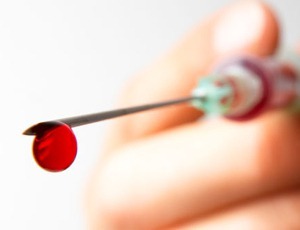
To investigate needlestick injuries and depression among the female medical staff in a city district” Yuan et al (2019). Abstract: Objective: To investigate needlestick injuries and depression among the female medical staff in a city district. Methods: Using cross-sectional survey methods, female medical staff from selected sixteen hospitals voluntarily participated in questionnaire survey on APP […]
Measures to reduce Amiodarone-induced phlebitis

Phlebitis is a well-described adverse effect of intravenous (IV) administration of amiodarone, with reported incidence ranging from 11% to 85%” Dixon et al (2019). Extract: Phlebitis is a well-described adverse effect of intravenous (IV) administration of amiodarone, with reported incidence ranging from 11% to 85%. Risk factors for amiodarone-induced phlebitis (AIP) are many and include […]
Are three blood cultures sets really necessary in febrile patients?
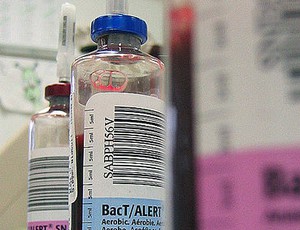
The optimal number of blood culture sets (BCs) should be seen in the light of a significant number of additional blood culture contaminants (BCC) with subsequent BCs. A stronger selection of patients who need BCs is mandatory to limit BCC” Mahieu et al (2019). Abstract: The optimal number of blood culture sets (BCs) should be […]
Giant dorsalis pedis pseudoaneurysm following arterial line insertion
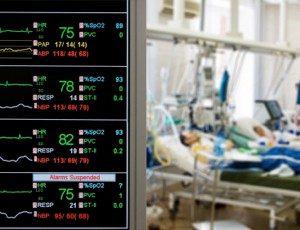
Here we report an unusual case of a giant DPA pseudoaneurysm after cannulation for arterial line placement in a patient newly diagnosed with systemic lupus erythematosus (SLE)” Anastasiadou et al 92019). Abstract: Dorsalis pedis artery (DPA) aneurysms are very rare and fewer than 60 cases have been reported in the literature. Most affected patients present […]
Health Care utilization after various vascular access selections

This study displayed that patients who received an AVF fully used health care and nonnephrology services than patients who received an AVG or CVC” Chang et al (2019). Abstract: BACKGROUND: To provide clinicians with sufficient information for selecting optimal access strategies for patients with end-stage renal disease, the utilization of health-care services of patients receiving […]
Clinical practice guidelines for replacing peripheral intravenous catheters

A community hospital policy of routinely replacing peripheral intravenous catheters (PIVCs) needed updating to the clinical practice guideline (CPG) of clinically indicated replacement” Oh et al (2019). Abstract: BACKGROUND: A community hospital policy of routinely replacing peripheral intravenous catheters (PIVCs) needed updating to the clinical practice guideline (CPG) of clinically indicated replacement. METHODS: Guided by […]
Quality improvement measures for early detection of severe intravenous infiltration

Infants are more likely to develop intravenous infiltrations due to the increased fragility of their blood vessels, deficient subcutaneous tissue and inability to express pain” Sangam (2019). Abstract: Intravenous infiltration is one of the most commonly seen morbidity in infants admitted to the neonatal intensive care unit (NICU). The risk of intravenous infiltration in preterm […]
Randomized trial compares 3 types of peripheral intravenous catheters

Our project supports current clinical recommendation that a closed PIVC system, regardless of type, is not only safer and cost-effective but also preferred by patients and clinicians” Galang et al (2019). Abstract: BACKGROUND: There was an increase in peripheral intravenous catheter (PIVC) complications and adverse patient events after product conversion during the merger between a […]
Effects of topical sesame oil on chemotherapy-induced phlebitis
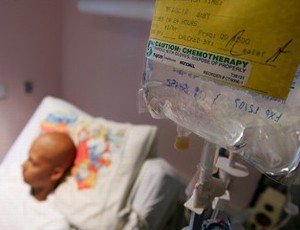
Currently, the use of complementary methods to prevent or alleviate phlebitis symptoms has attracted great attention. In this study, we aimed to assess the effects of topical sesame oil in reducing the pain severity of CIP” Bigdeli Shamloo et al (2019). Abstract: BACKGROUND AND PURPOSE: Chemotherapy-induced phlebitis (CIP) is one of the most important and […]
Central line insertion checklist and CLABSI rates

We compared hospital-wide CLABSI rate pre- and post-implementation of a dedicated procedure team as well as central line checklist completion and patient-specific variables between the procedure team and other providers” Styslinger et al (2019). Abstract: A primary strategy of central line–associated bloodstream infection (CLABSI) prevention is standardized, aseptic insertion of central lines. We compared hospital-wide […]
Infusion phlebitis represents 14% of reported hospital incidents

The notifications were classified by reason and the most prevalent were those related to medication (17%), followed by skin lesions (15%), and phlebitis (14%)” Furini et al 92019). Abstract: OBJECTIVE: Analyze incident notifications related to the patient’s safety. METHOD: Cross-sectional study with quantitative approach, based on data from the risk Management of a hospital complex, […]
Chlorhexidine sensitivity in staphylococci isolated from patients with CLABSI

We observed no significant changes in chlorhexidine minimum inhibitory and bactericidal concentrations, or in the prevalence of resistance-associated genes before and after introduction of 2% chlorhexidine tincture. Thus, there was no evidence of increased resistance to chlorhexidine in staphylococci causing central line-associated bloodstream infections” Jun et al 92019). Summary: Since 2011, 2% chlorhexidine in 70% […]
Central venous access devices in pediatric oncology patients

Implantation of CVADs seems to be safe and reliable in this large pediatric patient cohort. Even if complications occur in the long-term management of CVADs, they can be treated successfully and long-term catheter survival rates are excellent” Beck et al 92019). Abstract: Background: Central venous access devices (CVAD) provide important benefits in the management of […]
Factors influencing the adherence of nurses to standard precautions
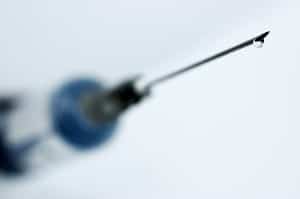
Standard precautions (SPs) serve as the first line of defense against exposure to blood and body fluids. The objective of this study was to explore the adherence of nurses to SPs and to identify factors influencing adherence to SPs” Oh and Choi (2019). Abstract: Background: Standard precautions (SPs) serve as the first line of defense […]
Patients’ estimated blood losses from diagnostic phlebotomy
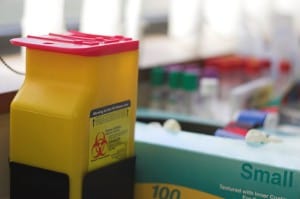
The objectives were to characterize the daily blood volumes drawn for diagnostic testing from patients discharged from a Canadian tertiary care center, describe the daily distributions of phlebotomy volumes across service locations, and describe changes in hemoglobin (Hb) and transfusion across service locations” Quinn et al (2019). Abstract: BACKGROUND: Phlebotomy for diagnostic testing is among […]
Prediction of right internal jugular vein central catheter length
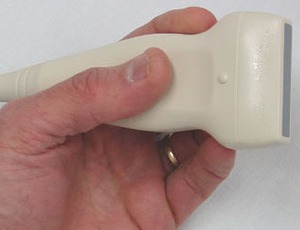
The appropriate depth of right internal jugular venous (RIJV) catheterization is still under debated. In this study, transesophageal echocardiography (TEE) is used to develop a prediction formula for fixed RIJV catheter depth” Ju et al (2019). Abstract: PURPOSE: The appropriate depth of right internal jugular venous (RIJV) catheterization is still under debated. In this study, […]
Failures of midline catheters in a hospital in the home program

Women experienced higher rates of midline catheter failure than men. The proportion of patients with midline catheters receiving continuous infusions who experienced a failure was markedly higher than those receiving bolus doses” Dickson et al (2019). Abstract: A cluster of 11 midline catheter failures occurred during a 2-week period in a Hospital in the Home […]
MDT associated hospital-wide reduction in CLABSI

Few data are available on hospital-wide incidence of central line-associated bloodstream infection (CLABSI) rates in patients with central venous catheter (CVC) in China” Han et al 92019). Abstract: BACKGROUND: Few data are available on hospital-wide incidence of central line-associated bloodstream infection (CLABSI) rates in patients with central venous catheter (CVC) in China, where many systemic […]
Parenteral nutrition administration by critical care nurses in Iran

In Iran, nurses are responsible for administering parenteral nutrition (PN) to hospitalized patients in intensive care units (ICUs). However, little information is available among nurses in Iran regarding best practices in PN administration” Taherkhani et al 92019).[epub ahead of print]. Abstract: In Iran, nurses are responsible for administering parenteral nutrition (PN) to hospitalized patients in […]
Gloved hand disinfection improved hand hygiene

The aim of this study was to improve hand hygiene compliance by implementing gloved hand disinfection as a resource-neutral process optimization strategy” Fehlinga et al (2019). Summary: Background: Hand hygiene compliance even before infection prone procedures (indication 2, “before aseptic tasks”, according to WHO) remains disappointing. The aim of this study was to improve hand […]
Cost-effectiveness of different short peripheral catheters
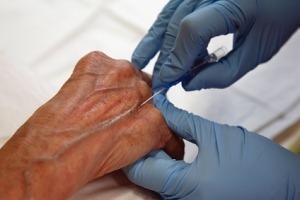
Low-cost, domestic short peripheral catheters (SPCs) and higher-priced, imported SPCs were compared in 2 different time periods” Dizbay et al (2019). Abstract: This prospective study has been designed with the hypothesis that low unit price does not necessarily mean cost-effectiveness. Low-cost, domestic short peripheral catheters (SPCs) and higher-priced, imported SPCs were compared in 2 different […]

